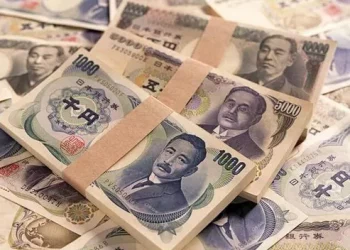In the ever-evolving landscape of global currencies, staying abreast of exchange rates is crucial for individuals and businesses engaged in international transactions. As of the latest market data, the question on many minds is, “What Is 10 SGD to GBP?” This inquiry reflects the ongoing curiosity about the strength of the Singapore Dollar (SGD) against the British Pound (GBP) and the implications it holds for financial interactions between Singapore and the United Kingdom. In this article, we will delve into the specific exchange rate, explore the factors influencing it, and analyze the current market trends shaping the SGD to GBP conversion.
1. Unveiling the Exchange Rate: 10 SGD to GBP
Let’s address the primary query: the current exchange rate for 10 Singapore Dollars (SGD) to British Pounds (GBP). As of the most recent data available, the exchange rate stands at 0.59. At current exchange rates, 10 Singapore dollars converts to approximately £5.94.This rate, determined by the foreign exchange market, dictates the value of 10 SGD in terms of GBP. Understanding this figure is essential for anyone involved in cross-border trade, investments, or travel between Singapore and the United Kingdom.
2. Historical Context: SGD to GBP Trends
To comprehend the significance of the current exchange rate, it’s vital to contextualize it within historical trends. Analyzing past performances can provide valuable insights into potential future movements. Historically, the SGD to GBP exchange rate has experienced fluctuations influenced by economic factors, geopolitical events, and global market conditions. By examining these patterns, individuals and businesses can better anticipate and navigate potential changes in the exchange rate.
3. Factors Influencing the Exchange Rate
Several factors contribute to the dynamic nature of currency exchange rates. Understanding these influences is crucial for interpreting the current SGD to GBP rate and predicting its future trajectory. Economic indicators, interest rates, inflation, political stability, and trade balances are among the key elements that impact exchange rates. An in-depth analysis of these factors can offer a comprehensive view of the forces shaping the currency markets.
4. Economic Indicators: A Key Driver
Economic indicators play a pivotal role in shaping the perception of a country’s economic health, subsequently affecting its currency’s value. Examining indicators such as GDP growth, employment rates, and manufacturing output in both Singapore and the United Kingdom provides valuable context for understanding the current SGD to GBP exchange rate. Positive economic indicators generally contribute to a stronger currency, while negative trends may lead to depreciation.
See Also:Current SGD Exchange Rate: Singapore Dollar to Philippine Peso
5. Interest Rates and Their Impact
Central banks, including the Monetary Authority of Singapore and the Bank of England, play a crucial role in influencing exchange rates through monetary policy. Changes in interest rates can have a direct impact on currency values. An analysis of the interest rate differentials between Singapore and the United Kingdom provides insights into the potential direction of the SGD to GBP exchange rate.
6. Inflation Dynamics
Inflation, the rate at which the general level of prices for goods and services rises, is another significant factor affecting currency values. A comparative study of inflation rates in both economies helps gauge their relative economic stability. Currencies from countries with lower inflation rates often appreciate against those with higher inflation, affecting the SGD to GBP exchange rate.
7. Political Stability and Exchange Rates
Political stability is a critical factor influencing investor confidence and, consequently, currency values. Countries with stable political environments tend to attract foreign investment, positively impacting their currency. On the other hand, political uncertainty can lead to currency depreciation. Evaluating the political landscapes in both Singapore and the United Kingdom provides valuable insights into the current SGD to GBP exchange rate.
8. Trade Balances and Currency Strength
Trade balances, reflecting the difference between a country’s exports and imports, can significantly impact its currency’s value. A trade surplus, where exports exceed imports, generally contributes to a stronger currency. Conversely, a trade deficit may lead to currency depreciation. Analyzing the trade dynamics between Singapore and the United Kingdom offers a lens through which to assess the SGD to GBP exchange rate.
9. Global Market Conditions
Currency exchange rates are also influenced by broader global market conditions. Factors such as market sentiment, geopolitical events, and global economic trends can lead to fluctuations in the SGD to GBP rate. Keeping a pulse on these external influences is essential for making informed predictions about future currency movements.
Conclusion: Navigating the Currency Landscape
In conclusion, understanding the current SGD to GBP exchange rate involves a multifaceted analysis of economic indicators, interest rates, inflation, political stability, and global market conditions. The specific rate for 10 SGD to GBP is a snapshot of the intricate web of factors shaping international currency values. By staying informed and employing a comprehensive approach to currency analysis, individuals and businesses can navigate the dynamic landscape of exchange rates with greater confidence and strategic acumen.
Related Topics:
Unveiling the Current SGD to INR Exchange Rate
Current SGD Exchange Rate: SGD to IDR
Current SGD Exchange Rate: How Much Is SGD to USD?



























